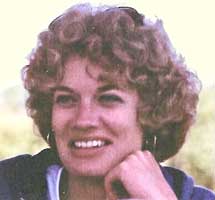If you have been reading this website over the years, you need no introduction to Miguel Cardona. We have been reporting on his many accomplishments since he was chosen as an Alma Exley Scholar in 1998.
Most recently, he has had an article published in a prominent national professional journal, District Administration. His article reported on the State of Connecticut’s initiative to close the achievement gaps in our public schools.

Connecticut has the widest gaps in the nation between the scores of students of color and white students as well between those of low-income students and non-low-income students. Calling this situation unacceptable, the Connecticut General Assembly convened a task force in 2011. The panel’s charge was to study these gaps and recommend solutions. The legislature’s stated goal was to close the gaps by 2020.
Dr. Cardona was named co-chair of the task force. At that time, he was principal of Hanover Elementary School in Meriden. He now serves as assistant superintendent of Meriden Schools. Named as the other co-chair was Toni Harp, then a state senator and now mayor of New Haven.
The task force heard testimony from educators and other experts, and also from children themselves, and submitted a master plan early in 2014. The plan includes a variety of recommendations for actions to close the gaps by 2020.
In his article, Dr. Cardona explains that the task force took an innovative approach to its challenge. This involved examining factors within the schools as well as external causes.
Reflecting this innovative approach, the task force helped create the Interagency Council (IC), to promote collaboration between educators and non-educators in addressing the gaps. This will encourage collaboration among various agencies serving the same children.
In a thought-provoking conclusion to the article, Dr. Cardona goes beyond the scope of the task force’s master plan by calling attention to another gap. This is the gap between spending on incarceration and education, with prisons accounting for nearly five dollars for every dollar spent on schools.
“Unless the funding gap between prisons and schools is reversed, I fear very little will change in the next 25 years,” he wrote. Strong words from a strong advocate for children.
I’m delighted that a valued member of the Alma Exley scholarship family has been taking the lead in addressing a vital issue in Connecticut – and that he has received this national recognition.
I wish Dr. Cardona and his task force well in their continuing efforts over the next several years. And I also wish to recognize the work that all of our scholarship recipients are doing in this same cause. In their daily activities on behalf of students across the country, they are surely making a significant difference.
– Woody Exley
